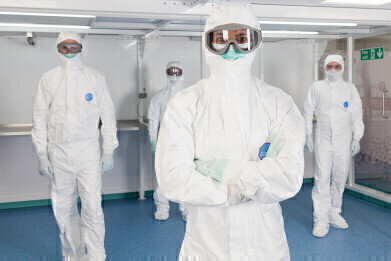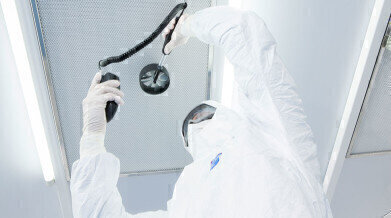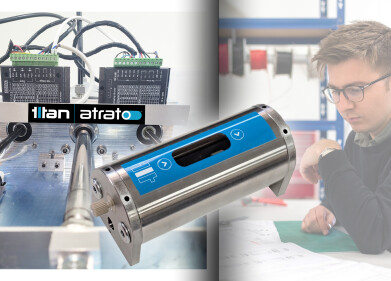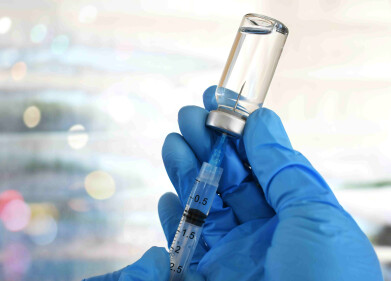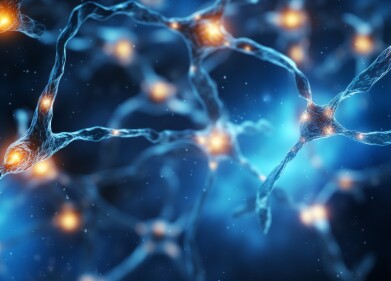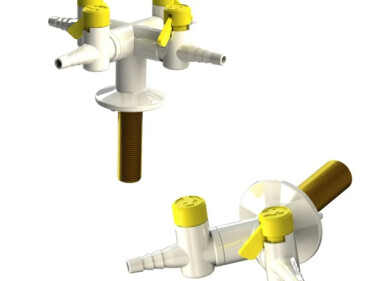Laboratory products
C2C examines guidance on creating COVID-secure labs and research facilities
Jun 04 2020
To support companies in creating COVID-secure workplaces, integrated cleanroom service provider, Connect 2 Cleanrooms (C2C) has thoroughly reviewed the UK Government guidance for laboratories and research settings.
Reintegrating operators to the workplace during the COVID-19 pandemic presents an opportunity for all cleanroom users to reinforce standard ‘best practice’ whilst introducing additional safety measures.
Cleanroom validation & air handling
To re-establish the workplace, the guidance recommends “restarting and testing equipment which may have been unused for a longer than usual period of time.” Cleanroom facility owners will need to consider how to qualify that equipment is operating in accordance with the regulatory guidelines it was built to comply with.
Practical steps:
- Full re-validation to re-commission facilities
- Using monitoring equipment to conduct a series of tests, i.e. airborne particle counts
People and their behaviours
Using a risk-based approach, it is recommended that organisations should review who needs to be in the cleanroom and how they flow through the facility. A one-way path is encouraged as it prevents face-to-face passing and it makes achieve social distancing achievable, even in narrow spaces such as corridors or change areas.
The guidance recognises that R&D settings may need to share equipment, but it asks that it is shared by the “smallest number of people” who should keep 2m apart.
Practical steps:
- Create a barrier between workstations with lab and cleanroom work protection screens
- Increase cleanroom footprint with a modular cleanroom or extension
- Increase workstations with laminar flow units or with additional benches and chairs
- Arrange people “to work side by side or facing away from each other rather than face to face”
- Stagger shifts and review entry procedures and storage space in change areas
- Implement one-way system
- Increase hand sanitising stations
Cleanroom maintenance
There is increasing evidence that although the virus itself is sub-micron in size, it is predominantly spread through droplets and not as an aerosol. On this basis, HEPA and ULPA filters should assist in removing these airborne particles.
This highlights that the filter media must be operating at the efficiency level they were designed to. Filter media failure could mean that contaminated air is being introduced through the air handling system, putting people and process at serious risk.
Practical steps:
- Appoint a cleanroom and validation specialist to conduct filter integrity testing
- Consider routine filter media replacement to reduce failure risks
- Take regular particle counts to identify any increases which could indicate filter failure
Cleaning and disinfection
In labs and cleanrooms, the focus usually lies on protecting the process, so there may be some adjustments that need to be made to shift the emphasis onto protecting people.
Practical steps:
- Frequent cleaning of workstations between uses, using usual products
- Determining cleaning processes or protection for personnel and equipment
- Frequent cleaning of objects and surfaces
- Clearing workspaces and removing waste and belongings after each shift
C2C’s dedicated consumables and equipment, cleanrooms and validations teams can support businesses in implementing the results from their risk assessment to create a COVID-secure workplace.
Digital Edition
Lab Asia Dec 2025
December 2025
Chromatography Articles- Cutting-edge sample preparation tools help laboratories to stay ahead of the curveMass Spectrometry & Spectroscopy Articles- Unlocking the complexity of metabolomics: Pushi...
View all digital editions
Events
Jan 21 2026 Tokyo, Japan
Jan 28 2026 Tokyo, Japan
Jan 29 2026 New Delhi, India
Feb 07 2026 Boston, MA, USA
Asia Pharma Expo/Asia Lab Expo
Feb 12 2026 Dhaka, Bangladesh
